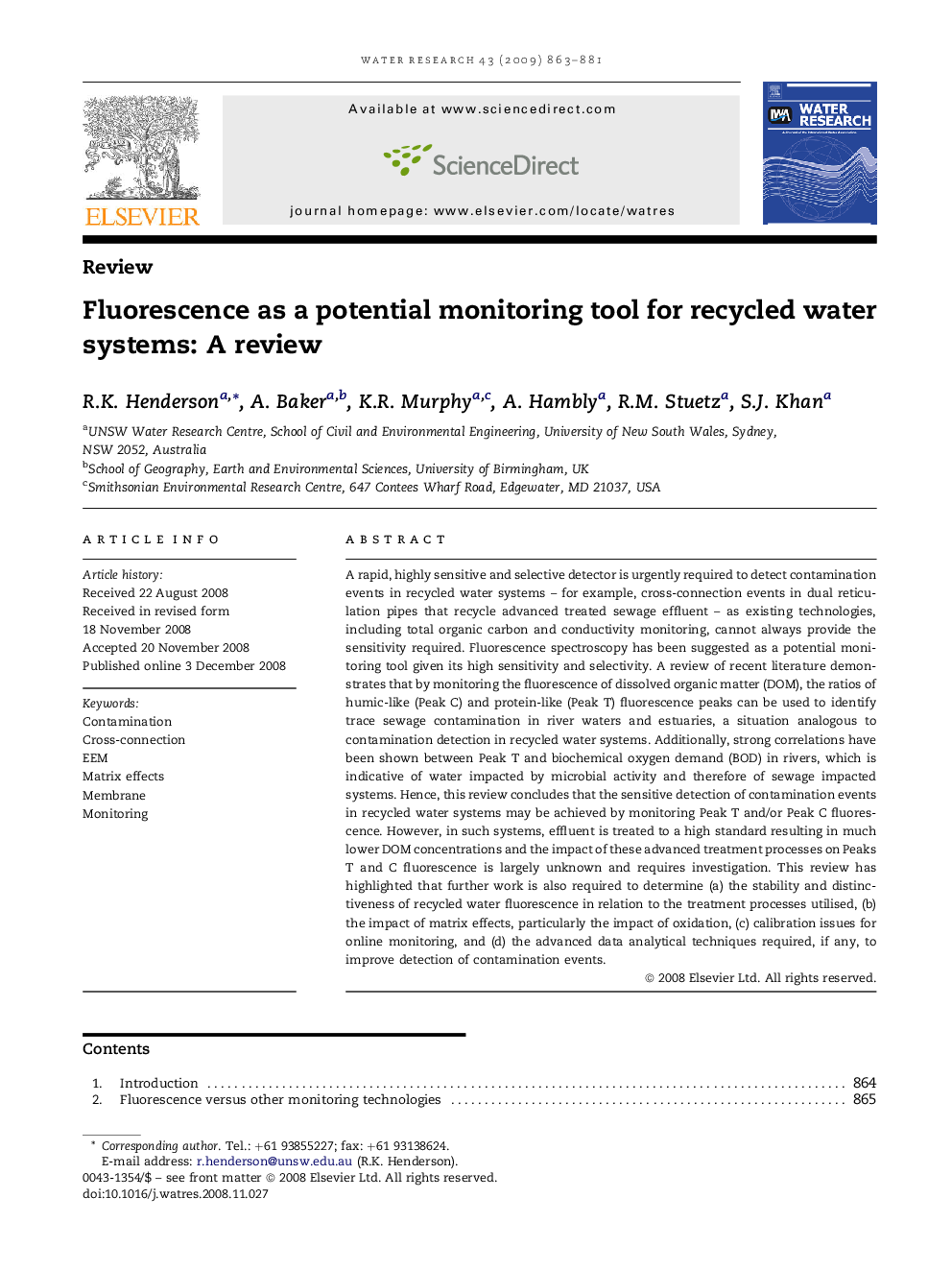| کد مقاله | کد نشریه | سال انتشار | مقاله انگلیسی | نسخه تمام متن |
|---|---|---|---|---|
| 4484365 | 1316918 | 2009 | 19 صفحه PDF | دانلود رایگان |

A rapid, highly sensitive and selective detector is urgently required to detect contamination events in recycled water systems – for example, cross-connection events in dual reticulation pipes that recycle advanced treated sewage effluent – as existing technologies, including total organic carbon and conductivity monitoring, cannot always provide the sensitivity required. Fluorescence spectroscopy has been suggested as a potential monitoring tool given its high sensitivity and selectivity. A review of recent literature demonstrates that by monitoring the fluorescence of dissolved organic matter (DOM), the ratios of humic-like (Peak C) and protein-like (Peak T) fluorescence peaks can be used to identify trace sewage contamination in river waters and estuaries, a situation analogous to contamination detection in recycled water systems. Additionally, strong correlations have been shown between Peak T and biochemical oxygen demand (BOD) in rivers, which is indicative of water impacted by microbial activity and therefore of sewage impacted systems. Hence, this review concludes that the sensitive detection of contamination events in recycled water systems may be achieved by monitoring Peak T and/or Peak C fluorescence. However, in such systems, effluent is treated to a high standard resulting in much lower DOM concentrations and the impact of these advanced treatment processes on Peaks T and C fluorescence is largely unknown and requires investigation. This review has highlighted that further work is also required to determine (a) the stability and distinctiveness of recycled water fluorescence in relation to the treatment processes utilised, (b) the impact of matrix effects, particularly the impact of oxidation, (c) calibration issues for online monitoring, and (d) the advanced data analytical techniques required, if any, to improve detection of contamination events.
Journal: Water Research - Volume 43, Issue 4, March 2009, Pages 863–881